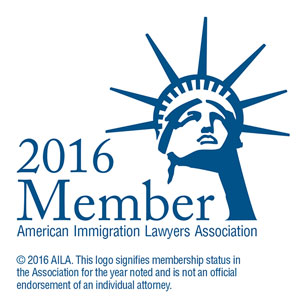Recent BALCA Cases Highlight the Importance of Choosing the Right Sunday Newspaper
In June 2019, the Board of Alien Labor Certifications Appeals (BALCA) issued at least ten decisions that addressed the employers’ choice of Sunday newspaper in the PERM labor certification recruitment process. So maybe they wanted to make a point? Let’s discuss.
As background, an employer must conduct a good faith recruitment of the labor market in order to obtain labor certification for a foreign national employee. The PERM recruitment process, whether for a professional or a nonprofessional position, requires employers to place two Sunday advertisements in a newspaper of general circulation. As PERM practitioners, having read the regulations, how confident are we on advising employers regarding which newspaper to use for Sunday ads? Some New York practitioners say that they always advise employers to use the New York Times. Others say they’ve successfully used the Daily News but have felt scared each time. What about the New York Post? Over the years the question just keeps coming up. The Department of Labor (DOL) has not provided any specific guidance. One FAQ contains the following question and answer:
Question: What is considered an acceptable newspaper and/or acceptable journal and is there a published list?
Answer: There is no published list of acceptable publications.
Most employers, based on their normal recruiting efforts, will be able to readily identify those newspapers…that are most likely to bring responses from able, willing, qualified and available U.S. workers.
I am not sure if the newspapers are as readily identifiable as the DOL expects.
For nonprofessional positions, 20 C.F.R. 656.17(e)(2)(ii) requires that the employer place “an advertisement on two different Sundays in the newspaper of general circulation in the area of intended employment most appropriate to the occupation and the workers likely to apply for the job opportunity.” For professional occupations, there is the added requirement that the newspaper be “most likely to bring responses from able, willing, qualified, and available U.S. workers.” See 20 C.F.R. 656.17(e)(1)(i)(B)(I). A nonprofessional occupation is defined as any occupation for which the attainment of a bachelor’s or higher degree is not a usual requirement for the occupation. A professional occupation is an occupation for which the attainment of a bachelor’s or higher degree is a usual education requirement. See 20 C.F.R. 656.3.
The ten recent BALCA decisions each involved the posting of Sunday ads in the Washington Examiner which was a free newspaper of general circulation in Maryland, D.C. and Virginia (it no longer publishes a Sunday newspaper). Eight of the decisions involved nonprofessional positions and two involved professional positions. In Matter of Fernando Lawn Services, LLC, 212-PER-01989 (Jun 6, 2019) the employer recruited for the position of Assistant Manager which required 2 years of experience as an assistant manager and a high school diploma. The CO denied the application on the sole ground that the Washington Examiner was “not a newspaper of general circulation most likely to bring responses from available U.S. workers.” As authority, the CO cited 20 C.F.R. 656.17(e)(1)(i)(B)(l) which relates to professional occupations. The employer requested reconsideration or review and argued that the job was nonprofessional; the Washington Examiner was a newspaper of general circulation in the intended area of employment and was most likely to bring responses from able, willing, qualified, and available U.S. workers. However, the CO denied the motion for reconsideration on the same sole ground even though he cited the regulations relating to both professional and nonprofessional occupations thereby conflating the standards applicable to professional advertising with those applicable to nonprofessional positions. The case was then forwarded to BALCA.
BALCA reexamined existing, inconsistent case law that involved the Washington Examiner. Capital Building Services, Inc., 2012-PER-01971 (Feb. 12, 2013) involved the position of Cleaning Supervisor. The job requirements were two years of experience and therefore the position was nonprofessional. The CO denied certification because the employer used the Washington Examiner as its newspaper of general circulation. The majority BALCA panel disagreed with the CO and ordered certification. They distinguished the case from Intercontinental Enterprises, Inc., 2011-PER-02756 (July 30, 2012). In Intercontinental Enterprises, the CO denied certification, finding that the Washington Examiner was not the newspaper of general circulation most appropriate to the occupation and the workers likely to apply for the job opportunity because it involved the professional position of Senior Food Technologist. The BALCA panel noted that the regulatory history of the regulations recognized a distinction between professional and nonprofessional occupations. Specifically, when the regulations were being promulgated, the Employment and Training Administration explained in the proposed rule:
Under the current system [i.e., the pre-PERM regulations], the employer may advertise, when a newspaper of general circulation is designated as the appropriate advertising medium, in any newspaper of general circulation. However, our experience has shown that some employers routinely place newspaper advertisements in those newspapers with the lowest circulation and that these publications are often the least likely to be read by qualified U.S. workers. Therefore, in order for the employer’s job opening to receive appropriate exposure, the proposed regulation requires that the mandatory advertisements appear in the newspaper of general circulation most appropriate to the occupation and the workers most likely to apply for the job opportunity in the area of intended employment. For example, in a relatively large metropolitan area such as Philadelphia, Pennsylvania or Washington, DC, it would not be appropriate to place an advertisement for a computer professional in a suburban newspaper of general circulation since workers interested in professional jobs consult the metropolitan newspapers in the area of intended employment with the largest circulation rather than the suburban newspapers of general circulation. On the other hand, it would be appropriate to advertise in a suburban newspaper of general circulation for nonprofessional occupations, such as jewelers, houseworkers or drivers.
ETA, Proposed Rule, Implementation of New System, Labor Certification Process for the Permanent Employment of Aliens in the United States [“PERM”], 20 C.F.R. Part 656, 67 Fed. Reg. 30466, 30471 (May 6, 2002).
The Intercontinental Enterprises panel acknowledged that The Washington Examiner was not a mere suburban newspaper, but found that the employer failed to establish that it was the newspaper in the Washington, D.C. area most appropriate to the occupation in question and the workers likely to apply for the job opportunity and most likely to bring responses from able, willing, qualified, and available U.S. workers. Essentially, The Washington Examiner was not appropriate to recruit for professional positions.
The panel in Capital Building Services found that the case was distinguishable from Intercontinental Enterprises because it presented an application involving a nonprofessional position and thus, the persons likely to apply are different types of job seekers. However, in his dissent, then Associate Chief Administrative Law Judge Johnson agreed with the majority that The Washington Examiner is a newspaper of general circulation and that the regulatory history indicates that a suburban newspaper of general circulation would be appropriate for certain nonprofessional occupations. But he disagreed with majority panel’s implication, by way of their grant of certification, that an employer may base its newspaper selection on less than the best newspaper choice for the occupation and the area of intended employment.
Further, in Millenniumsoft, 2012-PER-00636 (Nov. 23, 2015), regarding the position of Programmer Analyst, BALCA found that the use of the Washington Examiner was not appropriate for professional positions under either Intercontinental or Capital Building. The panel questioned the majority’s statement in Capital Building that the publication was a good choice for nonprofessional positions, noting that the statement did not seem consistent with the employer’s obligation under the regulation to use the newspaper “most likely” to attract domestic applicants. The “most likely” provision applies only to professional positions but the language “most appropriate to the occupation and the workers likely to apply for the job opportunity” appears in the criteria for both professional and nonprofessional positions. Several other BALCA panels go back and forth on finding the Washington Examiner to be either appropriate or inappropriate for recruitment for nonprofessional positions.
The panel in Fernando Lawn Services, after reviewing all the case law, agreed with the majority in Capital Building Services and held that the Washington Examiner is a newspaper of general circulation that may be a good choice for advertising certain types of jobs in the Washington, DC area; and the regulatory history indicates that a suburban newspaper of general circulation would be an appropriate choice for certain nonprofessional positions. BALCA held that an employer does not need to establish that its chosen newspaper is the best publication or has the greatest circulation where a nonprofessional occupation is involved. Rather, it must be established that it was “most appropriate to the occupation and the workers likely to apply for the job opportunity.” Since the employer asserted that the Washington Examiner was most appropriate and the CO offered nothing to refute this and did not identify the newspaper in which the Sunday ads should have been placed and explain why that paper would have been a better choice, the CO erred in denying the application.
Of the remaining nine recent cases, BALCA found the Washington Examiner to be the appropriate for nonprofessional positions such as Pipelayer, Server, Maintenance Repairer, Mason, Mechanic, and Cook and called out the CO for applying the standard applicable to professional positions to labor certification applications for these positions. See Eastern Pool Co. Inc., 2012-PER-01849; Fil Parong, 2012-PER-01167; Mount Vernon country Club, Inc., 2012-PER-02764; Daco Construction Corporation, 2012-PER-03333 and 2012-PER-03539; City Concrete Corp., 212-PER-02516 and Nova Europa Restaurant, 212-PER-03442, all issued on June 6, 2019.
In Georgetown Hill Early School, 2012-PER-03334, the offered position was that of a Teaching Assistant and required a Bachelor’s degree. The CO denied the application upon concluding that the Washington Examiner was not appropriate for recruitment for a professional position. In the end, BALCA did not accept the employer argument that the publication was targeted at young urban professionals and commuters and was widely read by white collar professionals and stated that this is not the standard but rather, it must be the newspaper “most likely to bring responses from able, willing, qualified and available U.S. workers” under the criteria for professional occupations appearing in 20 C.F.R. 656.17(e)(1)(i)(B)(1). See also, Software Catalysts, LLC, 2012-PER-01899 (Jun, 6, 2019).
BALCA cases can often serve as a warning of what is to come. Could the DOL soon start to focus more of its attention on the Sunday paper? While these recent cases focus on one paper in one geographic area, they are very important to highlight the importance of careful consideration when deciding on a Sunday newspaper of general circulation especially in relatively large metropolitan areas such as New York where there may be several newspapers that qualify as a “newspaper of general circulation.” It may not suffice to use the New York Times for a nonprofessional position such as a Nanny if the New York Times is not the paper “most appropriate to the occupation and the workers likely to apply for the job opportunity.” An argument that the New York Times has the highest circulation may not be successful if it cannot be proven that an out of work Nanny would likely search for a job in the New York Times as opposed to other newspapers of general circulation such as the New York Post or Daily News. In several of the ten cases discussed above, the CO actually checked the classified sections on the newspaper tear sheets provided by the employer and observed that the Washington Examiner’s classified sections included “no more than 30 total job listings over two pages, while they included nine pages of legal notices.” As practitioners, we ought to pay close attention to the types of advertisements that appear in different newspapers so that we are prepared to demonstrate that the employer has chosen the correct newspaper and to be able refute potential assertions made by a Certifying Officer in denying an application. There is no perfect method for making these determinations but in the end, the application ought to be certified as long as the employer has abided by the regulations and has demonstrated good faith recruitment. Hopefully.




